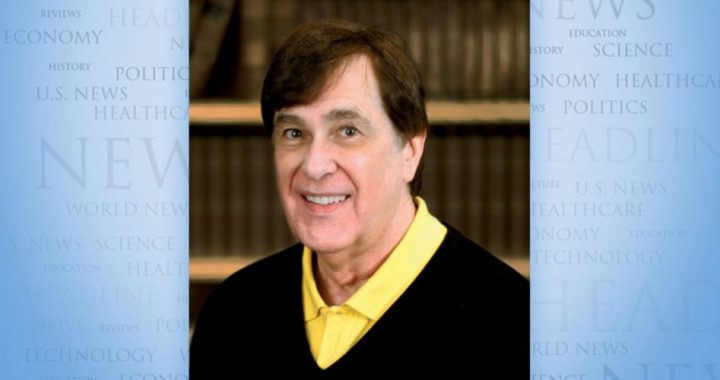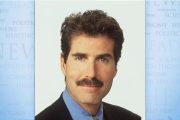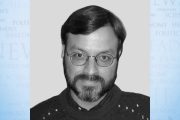
Poverty. It’s the excuse for nearly every government spending program. Help the poor. Tax the Rich. Get the One Percent. How dare they get so wealthy while everyone else suffers!
And what is the preferred way to eliminate poverty? Redistribution of wealth. It is the force behind the Occupy Wall Street movement, Agenda 21 and its Social Justice schemes, nearly every poverty program of the Federal government, and even most charitable poverty programs.
These schemes are all the same. Take money from the producers and give it to the non-producers. Yet, as billions of dollars are taken for the “cause,” poverty steadily increases. If one truly wants to help eliminate poverty, perhaps it’s time to rethink the process. To start, ask the question — why are some nations (and individuals) wealthy and others so poor?
There are many efforts underway to focus attention on world poverty. In a world of massive government spending that is supposed to be used to help the poor, the statistics on global poverty are staggering. According to the United Nations Millennium Project, there are currently 1.2 billion people living in poverty. Fifty thousand deaths per day occur worldwide as a result of poverty. Every year more than 10 million children die of hunger and preventable diseases. More than half of the world’s population lives on less than $2 per day and 800 million people go to bed hungry every night.
To combat the situation, there are massive efforts underway, from churches and charitable organizations to local, state, federal, and international government programs designed to eradicate poverty. Billions of dollars in foreign aid have been distributed to countries around the world to help feed the poor. Poverty reduction targets have been set. International goals have been announced. Deadlines have been determined. Agreement has been reached by every national leader that poverty must be eradicated.
There are faith-based programs designed to feed the children; education programs designed to create awareness of poverty and starvation; corporate programs designed to enhance global development, which would help to create business or bring existing corporations into nations to provide jobs; and government programs designed to build hospitals, schools, and improve healthcare and education. Charitable contributions and government money, either from the local level or through foreign aid, are the main source of funds for these efforts.
Yet little progress is being achieved as, in fact, the problem continues to escalate. There is an ever-growing disparity between rich and poor. Why?
To date, nearly every effort to eradicate poverty has focused on temporary relief of the suffering rather than getting to the root of the poverty and creating real solutions to actually eradicate poverty permanently. The result of such efforts, while well intentioned, and perhaps necessary in the short run to assure the poor are at least kept alive, will not solve the problem of poverty. In fact, such programs may actually make the situation worse.
Frankly there is not much new in this type of activity. For more than 50 years governments and charities have been focused on rushing aid to the poor and starving. Yet none of these efforts address the basic reason poverty exists in the first place. The solutions which call for more and more aid simply respond to the visual effects of poverty such as starvation, ignorance, and poor health. None truly address the cause. As a result, rather than easing the situation, the number of poor people continues to grow.
Most of the current anti-poverty efforts focus on redistributing funds from wealthier nations to poorer ones, either through mandatory taxation or charitable donations. This system ignores the fact that tomorrow the poor need to be fed again. Taxpayers or the voluntary donor must dig into his own funds yet again to help. The process is repeated daily, each time the poor recipient is only temporarily helped, as the tax payer or the donor become poorer themselves. Meanwhile, as massive funds are moved in and out of governments, bureaucracies are institutionalized to run the system. More and more money goes to feed the machinery of poverty than gets into the hands of the intended poor. Such a system sustains poverty rather than eradicates it.
Meanwhile, some corrupt and totalitarian governments also learn how to divert funds into their own coffers, again, depriving the poor of their daily bread. A system of bribes and local corruption often exists, making it nearly impossible for average citizens to receive government services. Such a system forces many of the poor to live outside of society in a virtual underground economy. This actually serves to sustain poverty against the efforts of those trying to eradicate it.
In addition, some international policies essentially institutionalize poverty. Policies which prevent or severely restrict development and energy use result in the violation of the most basic human rights, denying economic opportunities and the chance for better lives, the right to rid their countries of diseases that were vanquished long ago in Europe and the United States. For example, lack of electricity means no water purification or sewage treatment, no power for offices or hospitals, and no stoves to replace pollution-belching, lung-disease-causing open fires.
Yet, as the UN, through its Millennium Project, tells us that the goal is to eradicate poverty by the year 2015, the UN and nations including the United States, promote policies that make such goals impossible, Specifically, they promote Sustainable Development, which supporters say must stop the spread of human advancement in the name of protecting the environment. According to the doctrine, the poor in third world nations need to just do without electricity, clean water or modern development, for that is sustainable! Shameful.
To enforce such policy world wide, the UN, at the Rio+20 Summit held this past summer, in the name of ending poverty sought to enforce a tax on every developed nation equal to 0.7 percent of their gross national product. To every American, that is a redistribution of wealth equal to $1,325 per year for an American family of four. The money, they say, will end poverty and protect the environment.
And to get the job done, using that money, the UN will find it necessary to create a new global council to oversee it all; new UN agencies to administer the programs, budgets, and power; and “genuine global actions.”
In 2006, when I debated the head of the UN’s Millennium Project at Cambridge University in England, I said to him over dinner before the debate, “You realize you don’t have a chance to end poverty by 2015 by using redistribution of wealth, don’t you?” He said, “Yes, I know.”
The Real Way to End Poverty
It is becoming increasingly clear that poverty will never be eradicated unless those working on the problem will allow themselves to look for a drastically new way to attack it. Simply put, rather than constantly applying band-aids to the effects of poverty, they must look for the cause and fix it.
One must first look at the world and see where wealth is created and why it is so. The greatest example of wealth creation is obviously the United States. It is the beacon of wealth and freedom for the entire world. Most people in the world envy America’s wealth and seek ways to share it, yet very few look at how the nation got its wealth, or attempt to copy its system for success.
Why did the United States become so wealthy? Was it the possession of vast natural resources? Africa has more. Was it the existence of greater industry? Japan has more. Was it the existence of a superior education system? The United States now ranks below the top ten nations in education.
The reason the United States has led the world in wealth, standard of living, and abundance is that the average resident of the United States has had the ability and the opportunity to invest and produce capital.
Why could ordinary citizens of the United States produce their own capital to create personal wealth, while most of the rest of the world failed at such an attempt? The answer is actually very simple. The United States created a very easy, immediate, complete system for recording and securing ownership of private property.
Peruvian economist Hernando de Soto explains the root of American wealth in his book, The Mystery of Capital. De Soto asks, “Why does Capitalism thrive only in the West, as if enclosed in a bell jar?”
Capital, he argues, “is the force that raises the productivity of labor and creates the wealth of nations, It is the lifeblood of the capitalist system, the foundation of progress, and the one thing that the poor countries of the world cannot seem to produce for themselves.”
Why not in other countries? Because the laws and practices of most countries in the world make it nearly impossible for average citizens to own property or to prove ownership of property. There are vast obstacles to gaining legal ownership. For example, in Mexico it takes twenty years before a piece of property can be recorded. In Peru it took de Soto’s team of experts 289 days to legally register a new business, even after paying over $1,200 in registration fees. In the Philippines a prospective property owner would first have to organize an association with his neighbors in order to qualify for a state housing finance program. The entire process could take 168 steps, involving 53 public and private agencies and taking 13-25 years. And so it goes in country after country.
The impact of a $1,200 fee in a poor nation is enough to forever discourage even the attempt to register property. Such an amount in many developing countries may equal an entire year’s income. It is important to note the impact free markets and private property have on the income of a nation’s citizens. The per capita income for Americans is $41,400 per year. For Europeans, where more government control is exercised, the per capita income is $27,400. In the former Communist nations of Eastern Europe it is now $3,295. Yet, just a few years ago it was $2,047. As more freedom and greater ability to own property grows, so does the per capita income.
If ownership of property cannot be properly recorded and is unable to be traced directly to the owner, then it cannot create equity and cannot be used as collateral for credit. It is not of value to the owner, only an expense. This situation has created, in de Soto’s estimate, over $9.3 trillion in “dead capital.” That is property that cannot be used by anyone to create equity and therefore wealth.
While it is common practice in the United States to buy property, hold it for a few years and sell it at a substantial profit or move up to a better home, thereby creating individual wealth, such a system is basically unheard of in most nations of the world. If one doesn’t have or can’t prove title, then no bank will make loans on the property. In nations where property cannot be easily and legally registered, the only recourse is to go to friends and relatives, get a smaller loan (thereby reducing one’s ability to build a company) and still never have title to the business or the business property financed that way. Though people may live on and pay for property for years, it is hidden in an underground economy not beneficial to the individual or the national economy because ownership cannot be shown.
“In the West, by contrast,” de Soto argues, “every parcel of land, every building, every piece of equipment, or store of inventory is represented in a property document that is the visible sign of a vast hidden process that connects all these assets to the rest of the economy.” Seventy percent of all small businesses in the United States are started by equity loans on personal homes. Small, independently owned businesses employee the majority of people in the United States.
This then is the hidden secret of why the West became so wealthy and the rest of the world has been mired in poverty. I put this statement in past tense because the United States is now losing wealth as a result of a massive campaign to reduce private property ownership through the policy of Sustainable Development. If not reversed, the United States will find itself in Third World status for exactly the same reasons other nations have landed there — destruction of private property rights.
Obviously poverty can never be eradicated — and will actually increase — until government gets out of the way and everyone has the equal opportunity to own and benefit from the wealth associated with private property ownership.
Yet nearly every politician at every level misses this vital point. They tell us we need to relocate manufacturing jobs away from the First World into the Third World as a means to help them prosper. Such bad policy only leads to reducing wealth worldwide.
The fact is, there are many corporations and private and government programs which are working to establish industry and create jobs in poor nations. Certainly having a job is necessary to living a better existence. But such jobs, while certainly a step up from daily aid, are not the complete answer. Simply working a job and paying for one’s daily needs does not build wealth and it does little to help make citizens independent to fulfill their dreams. Yet, “providing jobs” has become the most advocated and most wrong-headed method of eradicating poverty.
As stated in the beginning, there are literally thousands of programs designed to provide a subsistence for life. It is, however, a life of perpetual bread lines and dependency on the charity of others — necessary to exist, but hardly an answer to fulfill dreams, wants, and desires.
During the great depression of the 1930s when many were out of work and flat broke, they were, of course, grateful for the assistance of private charities and government agencies. Such relief efforts helped them feed their families and provide the bare essentials of life. But they weren’t happy. They weren’t satisfied. Instead they had a drive to stand on their own — to make their own way — to live independently. In the United States most finally did break free of the assistance and created an independent life. As a result, the U.S. economy rebounded and grew, new industries rose, and a vibrant economic engine grew out of the ashes of the Depression. For most Americans the drive to own their own private property was the goal to be achieved. The process became known simply as the American Dream.
Today’s poor in undeveloped nations certainly want the same opportunities to advance. Yet many now live in societies that are in some ways 3,000 years behind the modern world. Because of its system of private property ownership, the West has created a world of advanced technology, health, and leisure where life expectancy is increased each decade. In the West, people truly can pursue a life of happiness.
In most of the world where poverty continues to increase, life is one of hopeless drudgery, where the constant drive for survival leaves little or no time for dreams or personal happiness or achievement. The West pours money into a broken system that simply does not address the problem. As we rush to provide each day’s aid, few charities or government programs seem to take the time to understand that hopes and dreams aren’t constant breadlines. Daily aid doesn’t allow the poor the opportunity to live their lives on their own terms.
Eradication of poverty in the world won’t come from endless aid designed for mere existence, nor will it come from simply providing jobs. The answer to poverty in the world will come only from providing the tools needed to create new, independent wealth. The solution to end poverty is private property ownership and for government to get out of the way.
Tom DeWeese is one of the nation’s leading advocates of individual liberty, free enterprise, private property rights, personal privacy, back-to-basics education and American sovereignty and independence. Go to americanpolicy.org for more information.



